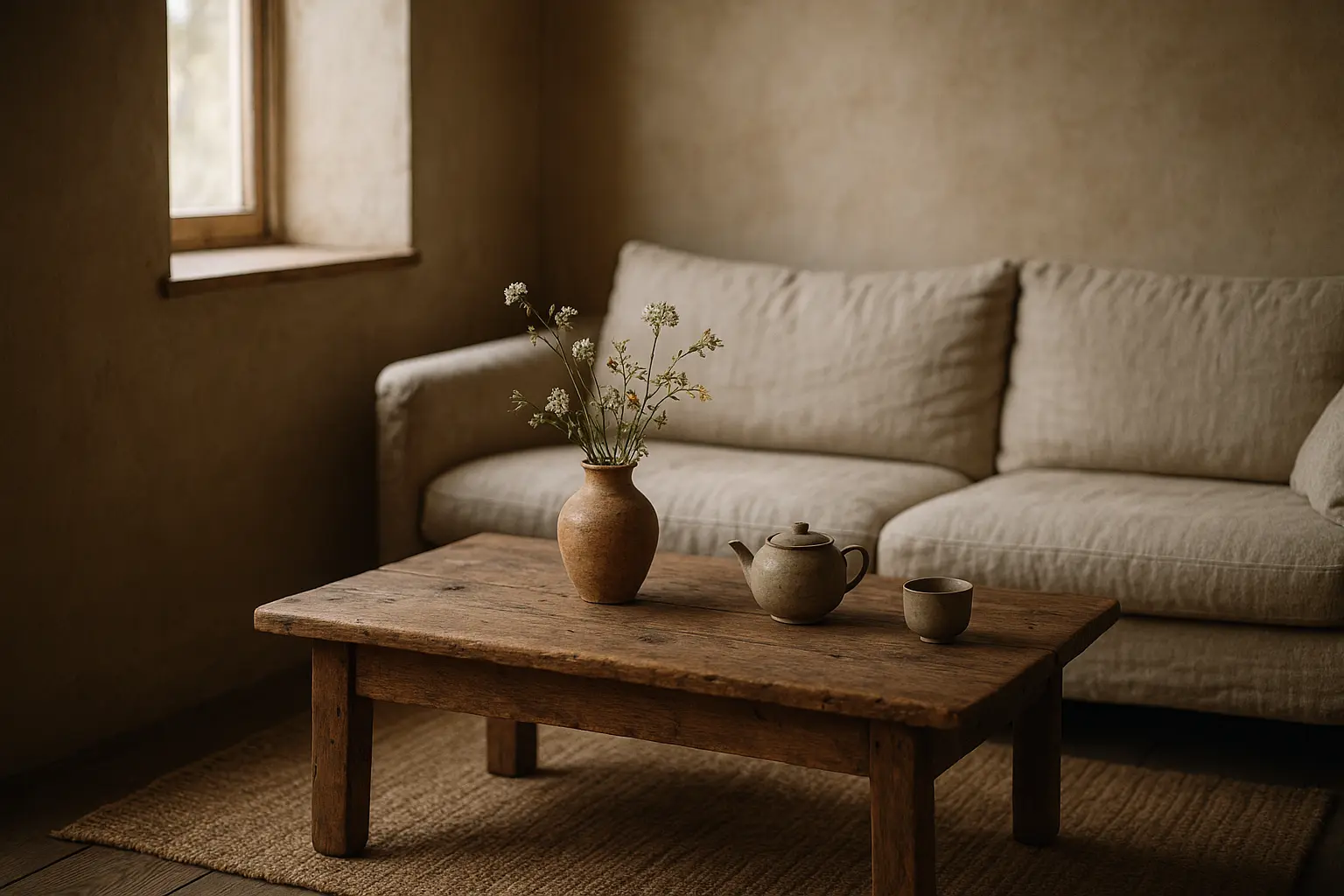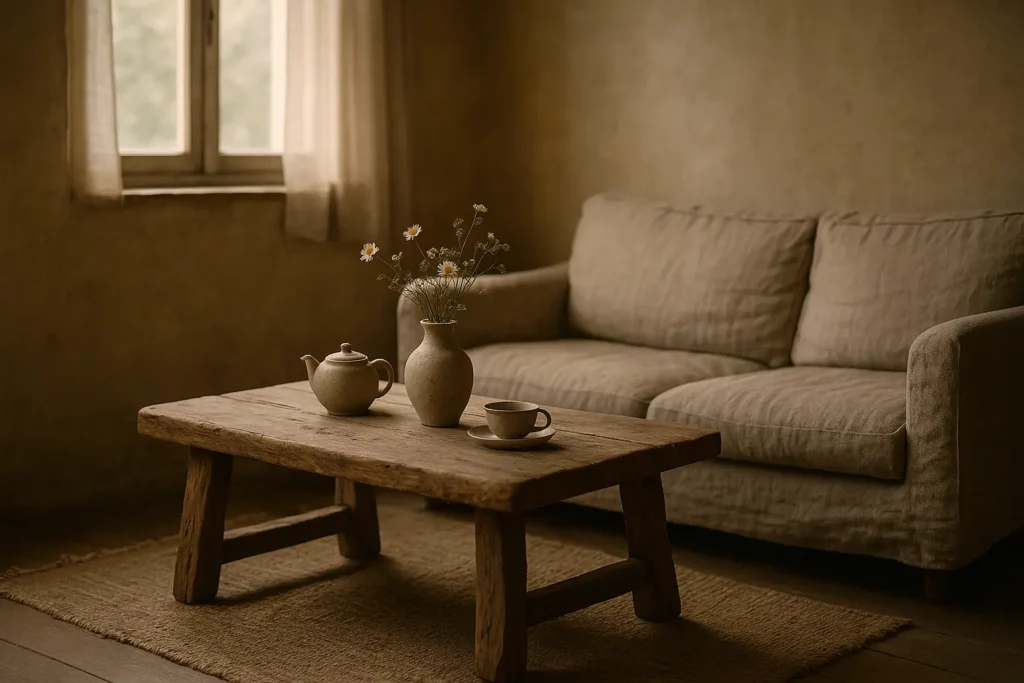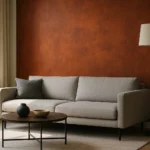In a world driven by perfection and speed, the Japanese philosophy of wabi-sabi invites us to pause and appreciate the beauty of imperfection. As we find ourselves increasingly disconnected from nature and our surroundings, wabi-sabi offers a gentle reminder that there’s profound beauty in the fleeting, the incomplete, and the natural. So, how do we bring this age-old philosophy into our living spaces? Let’s explore how wabi-sabi can transform your **home **design, infusing it with authenticity and tranquility.
The Essence of Wabi-Sabi: Embracing Imperfection
At its core, wabi-sabi is about finding beauty in the imperfect, the transient, and the unassuming. This Japanese concept celebrates the intrinsic charm in things that are unrefined, humble, and organic. Wabi refers to the kind of beauty found in simplicity and rusticity, while sabi is about the passage of time and the grace that comes with aging.
Embracing wabi-sabi within our homes is not about acquiring new items but about seeing the existing ones with new eyes. It’s about cherishing the cracks in the vase that tell a story or the warmth of an old wooden table. Wabi-sabi teaches us to appreciate the natural aging process, where the wear and tear of materials don’t signify decline but rather intimacy and character.
Incorporating wabi-sabi into our interior design means embracing the worn and the weathered, opting for materials like stone, wood, and clay that age gracefully. It’s about paring down to the essentials and learning to love the spaces we inhabit for their authenticity and lived-in comfort.
Designing with Nature: Harmonizing the Interior with the Organic
Our homes are extensions of ourselves, and the wabi-sabi philosophy encourages us to weave the natural world into our everyday spaces. Nature doesn’t rush, and neither should we when it comes to our interior style. By bringing nature into our living areas, we create an environment that is not only visually appealing but also soothing and grounding.
To cultivate a wabi-sabi atmosphere, consider using natural materials that harmonize seamlessly with the environment. From untreated wood to unpolished stone, these materials reflect the beauty of the earth and create a sense of unity between the inside and the outside. Houseplants, with their organic shapes and vibrant greens, can also play a crucial role in connecting us to nature.
Moreover, allowing sunlight to flood our spaces invites the calmness of the outdoors into our homes, highlighting the textures and subtle nuances of our surroundings. Ultimately, designing with nature in mind enriches our living experiences, grounding us in a mindful appreciation of the present.

Curating Space: Minimalism Meets Emotional Resonance
While minimalism strives for less, wabi-sabi deepens that ethos by focusing on meaningful simplicity. This philosophy encourages us to curate our spaces intentionally, surrounding ourselves with items that hold sentimental value and spark joy. In a wabi-sabi home, every object has a purpose and a story, encouraging an emotional connection with our environment.
Instead of cluttering our space with impersonal objects, we are guided to choose items that resonate with our personal history. This could be a piece of pottery bought during a memorable trip or a family heirloom passed down through generations. By embracing the old and the worn, we not only honor the passage of time but create a home that reflects our individual narratives.
Wabi-sabi also invites us to consider the role of space itself. Empty spaces aren’t voids to fill but canvases that offer breathing room, allowing us to appreciate the beauty of what remains. It’s about accepting the ebb and flow of life, recognizing that a little less can truly be a little more.
Incorporating wabi-sabi into our homes isn’t merely about changing decor; it’s about a shift in mindset. It challenges us to find beauty in the imperfections, to appreciate the fleeting nature of life, and to allow our spaces to evolve naturally over time.
As we embrace wabi-sabi, we strip away the unnecessary and open ourselves to a new way of experiencing life—one that values authenticity over perfection, connection over consumption. It’s a style that speaks to our desire for simplicity, peace, and truth, encouraging us to live in imperfect harmony with ourselves and the world around us.
By welcoming wabi-sabi into our homes, we embark on a journey of self-discovery, where our spaces become reflections of our most genuine selves. Let’s celebrate the beauty of the imperfect, the transient, and the heartfelt as we design our lives, one humble and profound moment at a time.
FAQ
What is the concept of Wabi-Sabi?
Wabi-Sabi is a Japanese aesthetic philosophy that appreciates beauty in imperfection, transience, and simplicity. It emphasizes finding grace in natural cycles and the acceptance of life’s impermanent nature.
How can one incorporate Wabi-Sabi into their home decor?
To integrate Wabi-Sabi into your home, choose items that celebrate natural materials, show signs of wear, or have an organic, unrefined appearance. Simplicity and functionality should guide your choices, favoring calm, muted color palettes.
What types of materials are considered Wabi-Sabi?
Materials that align with the Wabi-Sabi aesthetic include wood, stone, clay, and linen. These materials naturally age and change over time, reflecting the beauty of impermanence and the passage of time.
Can Wabi-Sabi be applied to modern interior design?
Absolutely. Wabi-Sabi can complement modern interiors by introducing elements that soften the often sleek and polished look. Incorporating handcrafted items, vintage pieces, or nature-inspired elements can create a harmonious balance.
Why is embracing imperfection important in Wabi-Sabi?
Embracing imperfection is central to Wabi-Sabi as it encourages acceptance of life’s natural flow and imperfections. This perspective fosters a sense of peace and contentment, allowing for a more mindful and authentic living experience.



